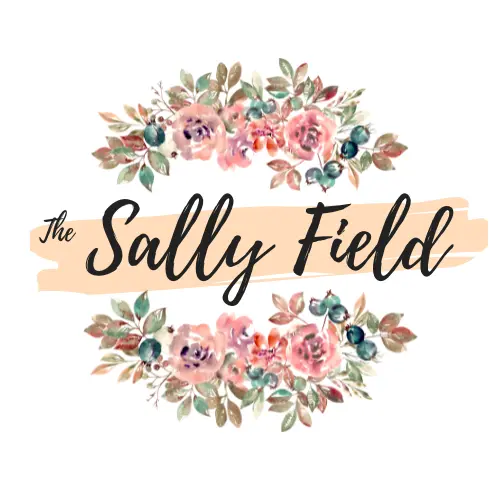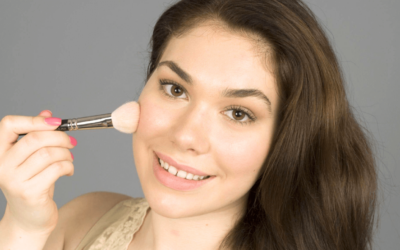In the realm of human relationships, the terms make up vs make out hold distinct places, each evoking a different set of emotions, actions, and intentions.
While they might sound similar, these two phrases carry unique connotations that can lead to intriguing discussions about intimacy, emotions, and human connections.
We delve into the captivating world of Make Up vs. Make Out, exploring the subtle nuances that differentiate these phrases and examining the multifaceted dimensions they encompass.
In the tapestry of human relationships, the phrases make up and make out are like threads interwoven with emotions, desires, and intentions.
Despite their apparent simplicity, these expressions harbor deep-seated meanings that can either mend emotional wounds or fan the flames of passion.
In this exploration, we delve into the realms of both making up and making out, dissecting the psychological and physiological layers that differentiate them.
Defining Make Up
Emotional Reconciliation
Making up, in the context of interpersonal relationships, is akin to the act of healing a wound. It involves emotional reconciliation, a process through which conflicts, misunderstandings, and hurt feelings are mended.
When partners engage in making up, they confront their differences and work towards understanding each other’s perspectives.
This process often requires empathy, vulnerability, and active communication. The goal is to mend the emotional fabric that was torn and to rebuild a sense of unity.
Communication and Understanding
Central to making up is the art of effective communication. Partners are encouraged to express their thoughts and feelings openly and honestly, addressing the root causes of their disagreements.
Active listening plays a crucial role, allowing each person to truly understand the other’s emotions and concerns. This form of communication fosters emotional intimacy, helping to bridge the gap created by misunderstandings.
Rebuilding Trust
At the heart of making up lies the delicate process of rebuilding trust. When conflicts arise, trust may be eroded, making it essential to work towards regaining it.
Trust-building involves demonstrating commitment to the relationship, keeping promises, and showing consistency over time. As trust is restored, partners can once again feel secure in the emotional connection they share.
Decoding Make Out
Passion and Sensuality
Making out ventures into a different territory altogether. This phrase exudes passion, sensuality, and a strong physical attraction between partners.
It involves intense kissing, often accompanied by touching and embracing, that ignites feelings of desire and intimacy.
Making out is a means of expressing longing and deepening the connection on a physical level.
Physical Connection
Making out is a powerful way of establishing a physical connection between partners.
The act of touching, holding, and exploring each other’s bodies fosters a sense of closeness that can be both exhilarating and comforting.
This physicality can serve as a manifestation of the desire and affection partners have for one another.
Exploring Desires
Within the context of making out, partners have the opportunity to explore their desires and boundaries. It’s a safe space for experimentation, allowing individuals to communicate their preferences and engage in consensual acts that bring pleasure.
This exploration can strengthen the bond between partners, as it requires trust and a shared willingness to indulge in vulnerability.
Comparing and Contrasting
Emotional vs. Physical
At the heart of the make up vs. make out debate lies the contrast between emotional and physical intimacy.
Making up focuses on emotional understanding, forgiveness, and healing, whereas making out emphasizes physical attraction, desire, and exploration.
Both dimensions are vital in relationships, yet they serve distinct purposes in different contexts.
Intentions and Context
The intentions behind making up and making out are divergent. Making up is rooted in resolving conflicts and strengthening emotional ties, whereas making out is about indulging in passion and exploring sensual desires.
Understanding the context in which these expressions occur is essential for fostering healthy communication and preventing misunderstandings.
Expressions of Affection
While making up and making out may seem worlds apart, they are both expressions of affection in their own right.
Making up showcases a willingness to invest time and effort into repairing the relationship, reflecting a deep emotional connection.
On the other hand, making out underscores a physical attraction that intensifies the bond between partners.
Navigating Relationships
Emotional Intelligence
Successfully navigating the terrain of make up and make out requires emotional intelligence.
The ability to recognize and manage one’s own emotions, as well as empathize with the emotions of others, is paramount.
Emotional intelligence enables partners to address conflicts sensitively and engage in passionate moments thoughtfully.
Setting Boundaries
In both making up and making out, establishing and respecting boundaries is crucial.
Emotional boundaries ensure that individuals feel safe and understood, while physical boundaries ensure that all interactions remain consensual and comfortable.
Communicating these boundaries openly contributes to the health and longevity of a relationship.
Maintaining Balance
A thriving relationship strikes a balance between emotional and physical intimacy. Making up and making out contribute to this equilibrium.
While making up mends emotional ruptures, making out rejuvenates the physical connection. Recognizing when each dimension is needed fosters a harmonious and fulfilling partnership.
Cultural and Generational Influences
Changing Norms
The perception of make up and make out is influenced by cultural and generational norms. As societies evolve, so do the expectations surrounding these terms. What was once taboo may now be embraced, and vice versa.
Being aware of these changes helps couples navigate societal pressures and make informed decisions about their relationships.
Traditions and Modernity
Traditions and modernity often intersect in the realm of relationships. Some cultures place a strong emphasis on emotional bonds and traditional values, while others celebrate individual desires and modern expressions of affection.
Balancing these influences allows couples to create relationships that honor their backgrounds while embracing contemporary notions of love.
Media and Perception
Media plays a significant role in shaping perceptions of intimacy. Movies, television shows, and social media platforms often portray both making up and making out in various lights.
Recognizing the difference between fictional depictions and real-life experiences can help individuals form realistic expectations and navigate relationship dynamics authentically.
Embracing Fluidity
Personal Choices
Relationships are as unique as the individuals involved in them. Some couples may prioritize emotional connection, while others may place a stronger emphasis on physical intimacy.
Embracing this fluidity allows partners to tailor their relationships to suit their preferences, creating bonds that are authentic and fulfilling.
Respecting Preferences
Understanding and respecting each partner’s preferences is paramount. Open conversations about desires, boundaries, and expectations pave the way for a healthier and more satisfying relationship journey.
Whether it’s making up or making out, mutual respect forms the foundation of a lasting and meaningful connection.
Communication as Key
Ultimately, the key to navigating the
complexities of make up and make out lies in communication. Transparent conversations about emotions, desires, and intentions enable couples to navigate the terrain of intimacy with confidence and understanding.
By maintaining an open dialogue, partners can ensure their relationship remains strong and vibrant. In the grand tapestry of human emotions, make up and make out are threads that weave together the myriad facets of intimacy.
From the profound art of emotional reconciliation to the electrifying realm of physical passion, these expressions illuminate the diverse ways in which humans connect.
By appreciating the differences, embracing fluidity, and fostering open communication, couples can embark on a journey that encompasses both the tenderness of making up and the fervor of making out, resulting in relationships that are rich, meaningful, and enduring.
















